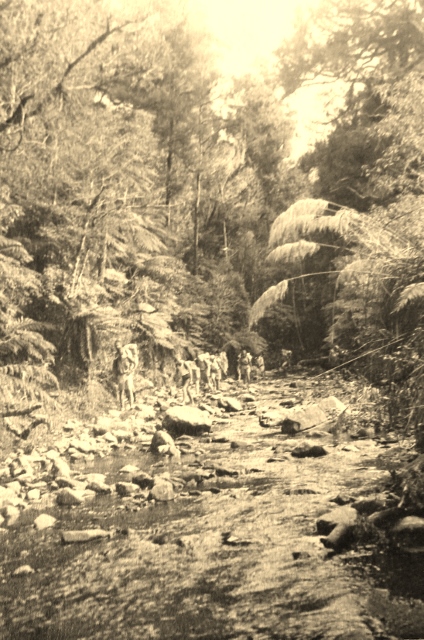 |
| Morrinsville - Matamata section - Photo 2008 courtesy Chris Ball |
For some in New Zealand history was given the role of “ Trail
Blazer”. - the early Pioneer engineers
and surveyors of the 19th Century. They explored, measured, drew
maps and plans and recorded in diaries, reports and papers ,their observations.
Engineers and surveyors were involved with what was then known as Railway and Tramway Survey and Construction in the Auckland Province, New Zealand during the years 1862 - 1908.
Engineers and surveyors were involved with what was then known as Railway and Tramway Survey and Construction in the Auckland Province, New Zealand during the years 1862 - 1908.
Theirs was the job
of preliminary and permanent way surveys; construction of the railway (
formation and permanent way) ; construction of bridges, culverts and drains
associated with the railways; Readying the buildings such as goods sheds,
signal buildings and railway stations.
They specialised in this field during those early years of railway and tramway
construction.
 |
| Unknown photographer |
 |
| Waihi Railway Station was opened in 1905 - Waihi Station in 2008 photo courtesy Chris Ball 2008 |
The role of the
Engineer in charge could be said to have been “problem solver”. It could be said it was a
role that needed a “thick skin” and “common sense” approach. Instances of these
needed skills were:-
- An incident with a member of a Survey Party being shot. Messrs Sheehan, Puckey, Thomson and Stewart called for and meetings to sort it out - an incident which occurred in a land survey camp impacting on the nearby proposed Thames Waikato Railway route.( Otago Witness 06/09/1879 )
- A meeting with local settlers over location of station and then terminus of railway - main trunk line at Te Awamutu.
- The “notorious bridge dispute " near Waharoa on the Morrinsville - Matamata section I Rotorua Railway with its final diplomatic outcome in the end of dinner speeches given by all parties. A mandate received to take the railway through to the Mamaku and on.( New Zealand Herald 17/08/1885)
 |
| Prices first locomotive ordered 1883 for Piako County Tramway ( AKA Waiorongomai Tramway) Never used on this Tramway was sold to Smythe Bros timber contractors - drawing ASB |
As well as " problem solving" there were
all the other things that went
with constructing a railway “ready to go.” It was the engineer in charge and
assistant engineer in charge who
organised the purchase and supply of rails , nuts, bolts and plates;
ordered sleepers - wooden in those days - thousands of them ; ordered
locomotives and rolling stock, organised construction of railway bridges - some
little more than a baillie bridge and others a little bigger or complex such as Ngaruawahia railway bridge, Hamilton railway
bridge and Kauaeranga railway bridge.
At
the end of the day there was only one decision that could be made for the
railway route.
 |
| early locomotive foreground and Helensville Station background photo 2011 - photo courtesy Chris Ball |
On the Railway Route
The Railway
engineers and surveyors were often away from
home for days, weeks and
sometimes months. Often there were no roads
on the routes they were taking for this
was "raw terrain " - They were finding the “best route” for a railway.
- Night base was a tent or “blanket roll" in the bush.
- Early days of travel from Auckland Southwards and Eastwards was by steamer and horse.
- A short cut route was used from the Piako County Tramway ( AKA Wairongomai Tramway) near Te Aroha through to the foothills of the Mamaku, where the Rotorua Railway was being surveyed.
 |
| Battery Remains near Waiorongomai near Mount Te Aroha 2009 - photo courtesy Chris Ball |
Life in a Survey Camp
- Railway Engineer Survey Teams were close-knit. Often lifelong work and friendship links were formed.
- Food and sleep after a day's work was essential. The terrain was often dense bush, swampy ground.
- Getting pegs and equipment ready for the next day's work. Writing up day diaries, drawing draft railway maps , checking the days curves and gradients
- Conversations, swapping professional ideas and keeping abreast of developments, chequers and chess.
- It is known that the Survey Camp was where the dreams of use of this new invention electricity were shared -electric power to run machinery and a town, electric tramways.
- There was often a cook preparing the meals for the surveyors.




















